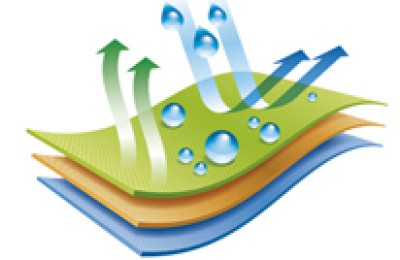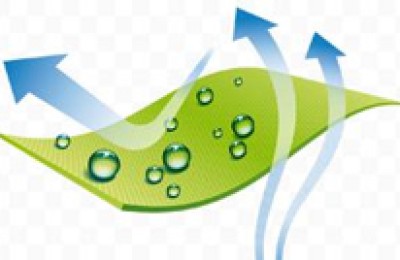Why does the whiteness of the fabric decrease when too much fluorescent whitening agent is used? Are there standards for the dosage of various whitening agents?
There are many varieties of fluorescent whitening agents, and there are certain brands of whitening agents for whitening various fibers.
Although the chemical structures and properties of various whitening agents are different, the principle of whitening fibers or fabrics is the same.
The whitening principle is mainly due to the fact that the molecules of the whitening agent contain a conjugated double bond system and have good planarity. This special molecular structure can Absorbs ultraviolet rays (wavelength: 300-400 nm) in sunlight and emits blue-violet light (wavelength: 420-500 nm). The blue-violet light mixes with the yellow light on the fiber or fabric to turn into white light, thereby making the fiber or fabric obviously white. .
▲Reflection curve of sample containing brightener
Fluorescence enhancement The whitening effect of the whitening agent is only an optical brightening and complementary color, and cannot replace chemical bleaching. Therefore, if the fabric without bleaching is directly whitened with a fluorescent whitening agent, the whitening effect will not be ideal. It can be known from the principle of fluorescent whitening agents that the whitening effect of the whitening agent mainly depends on the content of ultraviolet rays in the sunlight and the concentration of the fluorescent whitening agent on the fiber or fabric.
When the content of ultraviolet rays in the sunlight is sufficient and the concentration of the fluorescent whitening agent on the fabric changes within a certain range, the whitening effect will be enhanced as the concentration of the whitening agent on the fabric increases;
But when the concentration of the whitening agent is increased to a certain appropriate concentration, the whitening effect is the best and the highest whiteness value can be obtained. If the dosage of the whitening agent exceeds the optimal concentration, Instead of improving the whitening effect of the fabric, it actually decreases (that is, when the fabric turns yellow, the whiteness decreases). At this time, the optimal concentration of the whitening agent is called the yellowing point of the whitening agent.
The yellowing points of various optical brighteners are different. For example, the yellowing point of optical brightener DT (used for polyester) is 0.8%. That is, when whitening polyester, when the dosage of DT whitening agent exceeds 0.8%, the whiteness value decreases as the concentration increases.
The yellowing point of the fluorescent whitening agent VBL (used for pure cotton fabrics) is 0.5%, and the yellowing point of the fluorescent whitening agent DCB (used for whitening acrylic fibers) is 0.5%. 0.8%, fluorescent whitening agent CH (used for acrylic bulked yarn) with a yellowing point of 3.3%, Blankophor BBU (liquid) (Bayer company product, used for pure cotton fabrics) with a yellowing point of 1.26%, Uvitex ( ERN-P CGY company’s product, used for polyester fabrics) has a yellowing point of 0.8%, UvitexEBF 250% (paste) (CGY company’s product, used for polyester fabrics) has a yellowing point of 3%.
So, the main reason why the whitening effect no longer increases with the increase of the concentration of fluorescent whitening agent on the fabric is: because the intensity of yellow light on the fabric is limited , so the complementary color light of the yellow light emitted by the fluorescent whitening agent absorbing ultraviolet rays – blue-violet light – needed to offset the yellow light (the main wavelength is around 570nm) is also limited.
As the concentration of the fluorescent whitening agent on the fabric increases, the intensity of the blue-violet light emitted by it also increases, thereby offsetting part of the yellow light on the fabric, causing the yellow light intensity to gradually decrease. The fabric also becomes whiter and whiter.
When the concentration of the fluorescent whitening agent on the fabric increases to an appropriate concentration (i.e., the yellowing point of the whitening agent), the intensity of the blue-violet light emitted by it is exactly the same as that on the fabric. The intensity of the yellow light is equal and exactly offset each other. At this time, the fabric is the whitest and the whitening effect is the best.
When the intensity of blue-violet light is greater than the intensity that offsets the yellow light on the fabric, the blue-violet light reflected by the whitening agent is extremely obvious. With different constituent groups, different tones (such as cyan violet, red light blue, etc.) are also more obvious. The combined effect of the above two factors increases the gray tone of the fabric, and its effect increases with the whitening agent. The concentration increases and strengthens, thereby reducing the whitening effect. Although there is no trace of yellow light on the fabric at this time, it no longer looks white, bright, and dazzling.
For this reason, when selecting a whitening agent, in addition to considering its whitening effect, you must also conduct small sample tests to find the yellowing spots of different whitening agents on the fabric so that they can be used rationally to obtain the best whitening effect. </p






